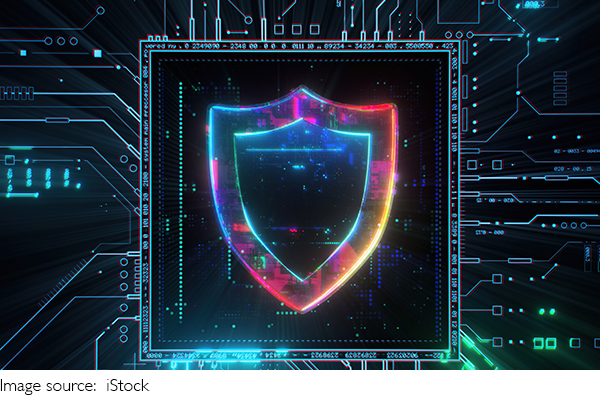Avoid Fraud Before It Hits!

Fraudulent schemes have existed as long as financial systems, but the rise of digital platforms, globalized trade, and interconnected financial ecosystems has made them more sophisticated than ever.
The modern investor faces a constantly evolving landscape, where new forms of financial fraud appear almost daily.
The World Economic Forum estimates that global financial fraud costs economies over $5 trillion annually, with personal investors often bearing the brunt of this invisible crime.
In today's environment, fraud isn't confined to large-scale schemes alone. From social engineering tactics targeting individuals to complex Ponzi schemes masquerading as legitimate investments, fraud has evolved in complexity. Understanding the newest types of fraud—and how to safeguard your assets—is crucial.
The Evolution of Financial Fraud: Emerging Trends
While traditional fraud tactics, such as identity theft and credit card fraud, remain prevalent, new digital threats are taking the spotlight. Cryptocurrency scams, investment frauds, and synthetic identity fraud are now among the most significant risks investors face.
Cryptocurrency Fraud: A Fast-Growing Concern
Cryptocurrency remains an attractive, though volatile, asset class. However, its decentralized nature and pseudonymous transactions make it a prime target for fraudsters. A 2025 report by Chainalysis highlighted that over $3 billion in cryptocurrency was stolen in 2024 through fraudulent schemes such as rug pulls, pump and dumps, and fake ICOs (Initial Coin Offerings).
In particular, rug pulls have become a popular scam in the decentralized finance (DeFi) space. Fraudsters promote a seemingly legitimate token or coin, encouraging massive investment, only to abandon the project and make off with the funds. To avoid these schemes, experts like Johnathan Hayes, a cybersecurity specialist at CyberShield Group, recommend investing only in well-known, audited projects with clear, transparent financial histories and robust user reviews.
Synthetic Identity Fraud: An Emerging Threat
Synthetic identity fraud has seen a sharp rise in recent years, particularly within the context of digital transactions and neobank services. By combining real and fake information, fraudsters create synthetic identities, which they use to open fraudulent accounts, make unauthorized transactions, and even apply for loans under false pretenses.
Unlike traditional identity theft, where a criminal uses a real person's details, synthetic identity fraud is far more difficult to detect. Experian's 2025 Fraud Report shows that synthetic fraud accounts for nearly 20% of all new account fraud. To protect yourself, it's critical to monitor your credit reports regularly, use two-factor authentication (2FA) for financial accounts, and avoid sharing sensitive information on unsecured platforms.
Common Fraud Schemes and How to Spot Them
While fraud tactics evolve, certain core warning signs remain universal. Recognizing these red flags can save investors from falling victim to fraudulent schemes.

Ponzi Schemes: The Classic Con
Despite widespread knowledge of Ponzi schemes, they continue to defraud individuals, especially those seeking high-return investments. These schemes promise impressive returns with minimal risk and generate payouts to earlier investors using the capital of newer participants. Over time, Ponzi schemes collapse as new investments dry up and those at the top make off with the profits.
In 2025, FinCEN reported that Ponzi schemes accounted for over $1 billion in losses to investors. A key warning sign is when an investment promises guaranteed returns or seems too good to be true. Experts like Sandra Liu, senior financial analyst at Guardians of Wealth, advise investors to scrutinize claims of high returns, especially when the investment lacks verifiable documentation or market transparency.
Social Engineering and Phishing: Manipulating Trust
Another prevalent scam in the modern era is social engineering, where fraudsters manipulate individuals into revealing sensitive information, often by pretending to be someone trustworthy. Phishing emails that appear to come from a legitimate financial institution, or fake websites that resemble real ones, are the most common tools for these attacks.
How to Protect Your Assets: A Multi-Faceted Approach
1. Due Diligence in Investment Opportunities
With the rise of crowdfunding platforms, alternative investments, and crowdsourced ventures, performing due diligence has never been more important. Financial advisors, such as David Richards of WealthSafe Advisors, recommend always researching the background of investment opportunities, particularly those that seem to promise unusually high returns in short periods.
2. Leverage Technology for Protection
Financial technology, or FinTech, has made it easier to protect your assets, with features like real-time transaction monitoring and fraud alerts. Regularly updating your passwords, using multi-factor authentication (MFA), and ensuring that your devices are protected with up-to-date antivirus software are simple, but effective, strategies to defend against fraud.
3. Keep Your Personal Information Secure
One of the most effective ways to protect your assets is to maintain strict control over your personal information. Avoid sharing details such as your Social Security Number, bank account numbers, or personal identification information over unsecured platforms. Be cautious when engaging in online transactions, especially with unfamiliar vendors or marketplaces.
As fraud schemes become increasingly sophisticated, so too must our strategies for safeguarding financial assets. With the right knowledge, tools, and due diligence, investors can protect themselves from falling victim to scams, while continuing to grow their wealth in a secure, responsible manner.
The key takeaway is this: protecting your assets in the modern era requires a multi-faceted approach, combining technological tools, vigilant monitoring, and educated decision-making. As financial fraud continues to evolve, staying informed and proactive is the best defense.
-
 Money With Smart Tech!Can A Simple App Outsmart Your Wallet? See What Happens When Money Meets Machine Power!
Money With Smart Tech!Can A Simple App Outsmart Your Wallet? See What Happens When Money Meets Machine Power! -
 Crypto Rules: Changing?How Will 2025's New Crypto Rules Impact Your Portfolio? What Investors NEED to Know NOW!?
Crypto Rules: Changing?How Will 2025's New Crypto Rules Impact Your Portfolio? What Investors NEED to Know NOW!? -
 Gen Z & Millennials Rise?Are Young Investors Winning The Game?! New Rules, Bold Moves, Or Financial Chaos? Find Out!
Gen Z & Millennials Rise?Are Young Investors Winning The Game?! New Rules, Bold Moves, Or Financial Chaos? Find Out!